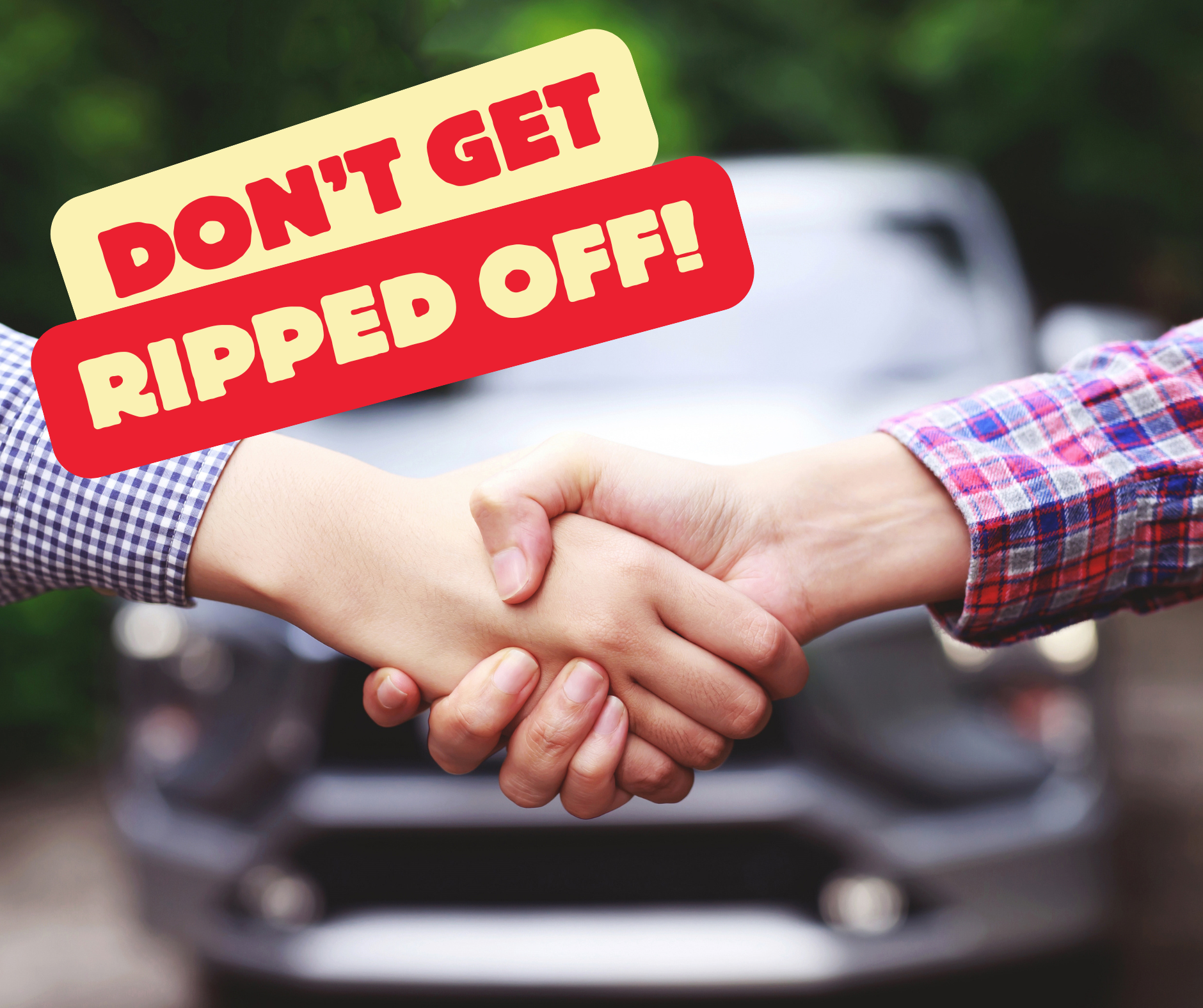I’ve bought a bunch of used cars over the years, and let me tell you – I’ve fallen for more than a few tricks. 😭 This guide will help you avoid the common mistakes and make sure you drive away happy, not scammed. 🤗
Step 1: Ask these questions before you even go see the car
When chatting with the seller (private or a dealership), it’s a good idea to ask these questions one by one. If you ask them all at once, they might only answer half and leave out the important stuff.
- Has the car had any major repairs?
- Is there anything wrong with it? Even the tiniest thing?
- Does it have a valid roadworthy certificate (RWC)? If not, will one be supplied with sale of the vehicle?
- When was the last service or oil change?
- Any signs of rust, either underneath or on the body?
- How many keys or remotes do you have? Do they all work?
☝️ If the answers sound promising, book a daytime test drive. Ask the seller to leave the car parked for a couple of hours before you arrive, so you can check how it starts when the engine is cold.
Step 2: When you arrive – take your time!
When inspecting the car, don’t let the seller hover too close or distract you with small talk. You want to give it a good once-over without rushing.
What to look for outside the car:
- Walk around and check for scratches, dents, and cracks on windows. If the seller is nearby, say the issues out loud – it can help later when you’re negotiating.
- Make sure the tyres have enough tread left and aren’t too old. (Tyres older than five years aren’t safe – you can find the date stamped on them.)
- Check the spare tyre too and make sure it’s in decent shape.
Step 3: Check under the bonnet and around the car
Before you even start the engine, go through this quick checklist: 📋
- Test the keys and remotes. Make sure they unlock and start the car with no issues.
- Check the oil level – it’s a good sign if the seller kept it topped up.
- Turn the key halfway to see if the warning lights come on (especially the engine light).
- Cold start: When you start the car, the temperature gauge should show the engine is cold. If it’s already warm, ask when it was last driven.
- Check the exhaust – there shouldn’t be any smoke coming out. Blue or white smoke is a red flag.
- Listen to the engine for strange noises when it’s running.
- Look under the car for leaks or rust patches.
Step 4: Test the lights and buttons inside the car
- Test the headlights, indicators, brake lights, and reverse lights.
- Try all the doors and windows – do they open and close smoothly? Can the windows roll up and down?
- Don’t forget the boot! Open it up and make sure everything works, including any hydraulic struts.
- Test the wipers and washer fluid, and give the horn a couple of honks (just for fun).
- Try the radio, aircon, and heater to see if everything works as it should.
Step 5: Take it for a proper test drive
🧐 If possible, go for a drive without the seller so you can listen carefully to the car. If they insist on coming along, let them know you’ll need to concentrate, so it might get a bit quiet.
- Reverse: Make sure it engages smoothly.
- Steering: Do a U-turn to test the steering – it should be easy and quiet.
- Brakes: Test them gently at first, then more firmly. No squeaks or grinding sounds, please!
- If the car has cruise control, give it a go.
- Accelerate quickly to see if the gears change smoothly (if it’s automatic).
- Take the car on a road where you can drive at 100 km/h or more. There shouldn’t be any shaking or weird noises, and the car shouldn’t pull to one side.
- If possible, stop by a place like Dekra or Bosch for a quick diagnostic scan. They’ll help you spot any hidden issues.
Step 6: Now let’s talk business
If everything checks out, it’s time to look into the car’s history. You can use a TransUnion Vehicle Check to see if the car was in any accidents, how many owners it’s had, and if there’s still any finance owed on it. 🔎 Be cautious of cars with:
- More than three previous owners – that’s usually a bad sign.
- Sellers who’ve owned the car for only a short time – they might be hiding something.
- Gaps in the service history – this could mean the car wasn’t maintained properly.
Step 7: Making the offer (and getting a good deal)
Once you’ve spotted any issues (big or small), mention them all to the seller. Even if you’re not planning to fix everything, use these issues to negotiate the price.
- Be polite but firm. Let them know what repairs will cost (you can call a mechanic for an estimate).
- Don’t be afraid to walk away. If the seller refuses to budge on price or seems dodgy, it’s better to keep looking. There are plenty of other cars out there.
Final Thoughts: Stay sharp and save yourself the stress
Buying a used car in South Africa can be a great way to save money – as long as you know what to watch out for. With this checklist (and our Ultimate Used Car Buying Checklist), you’ll avoid most of the common tricks and make a smart purchase.
Good luck out there, and happy hunting!



Comment